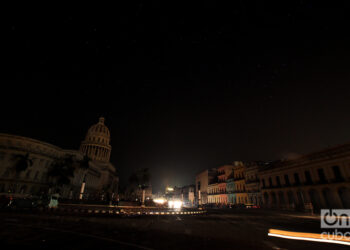Digging into the melodic shelves of a heritage city, the Esteban Salas Early Music Festival of La Habana seduces with its historically informed way of presenting scores, an art with sensitivity and expertise of its performers, gives life to the past and witnesses an invaluable cultural heritage.
Since Saturday, the tenth edition of the city event pulls back the curtains of the sacred and the pagan, and like a time machine, it goes towards a past rich in rhythms from the Old World and that New World conquerors wanted to make their own.
It was then interesting that in the inaugural concert they moved on a less traveled path in musical research, as it was the African heritage in sound and the Ars Longa ensemble, host of the event, revealed in the Basilica Menor of the St Francis of Assisi convent.
Ars Longa performed “Gulumbá gulumbé. Echoes of Africa in the New World,” led by the soprano Teresita Paz and Aland López, a concert based on studies of prominent Guatemalan musicologist, researcher and director Omar Morales Abril. Thus, the so-called black carols came magically back to life when performed by Ars Longa and its guests: the coral attached to the Barracoa orchestra of the National School of Art and the Vocal Luna Female Choir.


The songs were Christmas carols mostly, which came dressed with a scenic projection conceived by Antonia Fernández, which encouraged the viewers and revealed a previous study about the black influence in the Latin American context.
The opening program Gulumba gulumbé brought us back to the time of the melody played, thanks to careful work with the old instruments, as were the sweet flutes, oboes, the sackbuts, violas da gamba, Renaissance lute or Baroque guitar.
It was a nice preamble for this first presentation of Havana’s event that, specially, was attended by Luis Carbonell, nicknamed “The watercolorist of Antillean poetry.”
The opening concert of the 10th Esteban Salas Early Music Festival seduce us continue reviewing sessions of an event that will offer concerts through March 22 in different areas of the city and other foundational Cuban villages.


Photos: Roberto Ruiz










